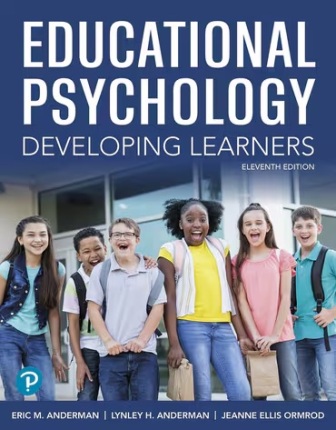找到
346
篇与
test bank
相关的结果
-
 test bank for Introduction to Health Care 6th Edition by Lee Haroun test bank for Introduction to Health Care 6th Edition by Lee Haroun Test Bank For Introduction to Health Care by Lee Haroun 6th Edition Chapter 1-23 Ch 01 Your Career in Health Care According to Federal economists, health care spending continues to __ in the United States. a. increase b. decrease c. stabilize d. waver ANSWER: a POINTS: 1 DIFFICULTY: Understand REFERENCES: Your Future in Health Care QUESTION TYPE: Multiple Choice HAS VARIABLES: False LEARNING OBJECTIVES: IHC.HARO.01.01 - Describe the current and projected economic status of the health care industry. DATE CREATED: 7/8/2024 1:33 AM DATE MODIFIED: 7/13/2024 1:34 AM The United States Bureau of Labor Statistics reports a rapid growth in health care careers due to growth and workers who a. are terminated. b. have left their jobs permanently. c. need support with current duties. d. are newly trained in the health care field. ANSWER: b download via https://r.24zhen.com/EzJUd
test bank for Introduction to Health Care 6th Edition by Lee Haroun test bank for Introduction to Health Care 6th Edition by Lee Haroun Test Bank For Introduction to Health Care by Lee Haroun 6th Edition Chapter 1-23 Ch 01 Your Career in Health Care According to Federal economists, health care spending continues to __ in the United States. a. increase b. decrease c. stabilize d. waver ANSWER: a POINTS: 1 DIFFICULTY: Understand REFERENCES: Your Future in Health Care QUESTION TYPE: Multiple Choice HAS VARIABLES: False LEARNING OBJECTIVES: IHC.HARO.01.01 - Describe the current and projected economic status of the health care industry. DATE CREATED: 7/8/2024 1:33 AM DATE MODIFIED: 7/13/2024 1:34 AM The United States Bureau of Labor Statistics reports a rapid growth in health care careers due to growth and workers who a. are terminated. b. have left their jobs permanently. c. need support with current duties. d. are newly trained in the health care field. ANSWER: b download via https://r.24zhen.com/EzJUd -
 TEST BANK FOR Corporate Cybersecurity, 6th edition by Randall J Boyle, Raymond R. Panko TEST BANK FOR Corporate Cybersecurity, 6th edition by Randall J Boyle, Raymond R. Panko TEST BANK FOR Corporate Cybersecurity, 6th edition by Randall J Boyle, Raymond R. Panko ISBN: 978-0135339299 COMPLETE GUIDE ALL CHAPTERS COVERED 100% VERIFIED A+ GRADE ASSURED!!!!!NEW LATEST UPDATE!!!!! Corporate Computer Security, 6e (Boyle/Panko) Chapter 1 The Threat Environment 1) The process of protecting computer hardware, networks, data, and applications from attackers is called . A) cybersecurity B) the threat environment C) a data breach D) a countermeasure Answer: A Page Ref: 16 Learning Objective: 1.1 Define the term threat environment Difficulty: Easy 2) If an attacker breaks into a corporate database and deletes critical files, this is an attack against the security goal. A) confidentiality B) integrity C) availability D) C I A Answer: B Page Ref: 20 Learning Objective: 1.1 Define the term threat environment Difficulty: Moderate 3) Which of the following is a type of countermeasure? A) Ethical B) Invisible C) Detective D) Sustainable Answer: C Page Ref: 21 Learning Objective: 1.1 Define the term threat environment Difficulty: Moderate download via https://r.24zhen.com/8wNj5
TEST BANK FOR Corporate Cybersecurity, 6th edition by Randall J Boyle, Raymond R. Panko TEST BANK FOR Corporate Cybersecurity, 6th edition by Randall J Boyle, Raymond R. Panko TEST BANK FOR Corporate Cybersecurity, 6th edition by Randall J Boyle, Raymond R. Panko ISBN: 978-0135339299 COMPLETE GUIDE ALL CHAPTERS COVERED 100% VERIFIED A+ GRADE ASSURED!!!!!NEW LATEST UPDATE!!!!! Corporate Computer Security, 6e (Boyle/Panko) Chapter 1 The Threat Environment 1) The process of protecting computer hardware, networks, data, and applications from attackers is called . A) cybersecurity B) the threat environment C) a data breach D) a countermeasure Answer: A Page Ref: 16 Learning Objective: 1.1 Define the term threat environment Difficulty: Easy 2) If an attacker breaks into a corporate database and deletes critical files, this is an attack against the security goal. A) confidentiality B) integrity C) availability D) C I A Answer: B Page Ref: 20 Learning Objective: 1.1 Define the term threat environment Difficulty: Moderate 3) Which of the following is a type of countermeasure? A) Ethical B) Invisible C) Detective D) Sustainable Answer: C Page Ref: 21 Learning Objective: 1.1 Define the term threat environment Difficulty: Moderate download via https://r.24zhen.com/8wNj5 -
 TEST BANK For Edmunds' Pharmacology for the Primary Care Provider, 5th Edition by Constance TEST BANK For Edmunds' Pharmacology for the Primary Care Provider, 5th Edition by Constance TEST BANK For Edmunds' Pharmacology for the Primary Care Provider, 5th Edition by Constance download via https://r.24zhen.com/qc9w0
TEST BANK For Edmunds' Pharmacology for the Primary Care Provider, 5th Edition by Constance TEST BANK For Edmunds' Pharmacology for the Primary Care Provider, 5th Edition by Constance TEST BANK For Edmunds' Pharmacology for the Primary Care Provider, 5th Edition by Constance download via https://r.24zhen.com/qc9w0 -
 Educational Psychology 15th Edition Woolfolk TEST BANK Educational Psychology 15th Edition Woolfolk TEST BANK Test Bank for Educational Psychology, 15th Edition, Anita Woolfolk, Ellen L. Usher, ISBN-13: 9780136945116 Table of Contents PART I: SETTING THE STAGE 1. Learning, Teaching, and Educational Psychology 2. Who Are You? Who Are Your Students? Culture and DiversityPART II: DEVELOPMENT: SIMILARITIES AND DIFFERENCES 3. Cognitive Development 4. The Self, Social, and Moral Development 5. Learner Differences and Learning Needs 6. Language Development, Language Diversity, and Immigrant Education 7. Behavioral Views of Learning 8. Cognitive Views of Learning 9. Complex Cognitive Processes 10. Constructivism and Interactive Learning 11. Social Cognitive Views of Learning and Motivation 12. Motivation in Learning and TeachingPART IV: TEACHING AND ASSESSING 13. Creating Supportive Learning Environments 14. Teaching Every Student 15. Classroom Assessment, Grading, and Standardized Testing
Educational Psychology 15th Edition Woolfolk TEST BANK Educational Psychology 15th Edition Woolfolk TEST BANK Test Bank for Educational Psychology, 15th Edition, Anita Woolfolk, Ellen L. Usher, ISBN-13: 9780136945116 Table of Contents PART I: SETTING THE STAGE 1. Learning, Teaching, and Educational Psychology 2. Who Are You? Who Are Your Students? Culture and DiversityPART II: DEVELOPMENT: SIMILARITIES AND DIFFERENCES 3. Cognitive Development 4. The Self, Social, and Moral Development 5. Learner Differences and Learning Needs 6. Language Development, Language Diversity, and Immigrant Education 7. Behavioral Views of Learning 8. Cognitive Views of Learning 9. Complex Cognitive Processes 10. Constructivism and Interactive Learning 11. Social Cognitive Views of Learning and Motivation 12. Motivation in Learning and TeachingPART IV: TEACHING AND ASSESSING 13. Creating Supportive Learning Environments 14. Teaching Every Student 15. Classroom Assessment, Grading, and Standardized Testing -
 Educational Psychology Developing Learners 11th Edition Anderman TEST BANK Educational Psychology Developing Learners 11th Edition Anderman TEST BANK Test Bank for Educational Psychology Developing Learners, 11th Edition, Eric M. Anderman, Lynley H. Anderman, Jeanne Ellis Ormrod, ISBN-13: 9780137871384 Table of Contents 1. Teaching and Educational Psychology I. DEVELOPMENT AND DIVERSITY 2. Cognitive and Linguistic Development 3. Personal and Social Development 4. Group Differences 5. Individual Differences and Special Educational NeedsII. LEARNING AND MOTIVATION 6. Behaviorist Views of Learning 7. Learning, Cognition, and Memory 8. Complex Cognitive Processes and Self-Regulation 9. Learning and Cognition in Context 10. Motivation: Confidence, Values, and Needs 11. Motivation, Affect, and EngagementIII. CLASSROOM STRATEGIES 12. Creating a Setting Conducive to Learning 13. Instructional Strategies 14. Classroom Assessment Strategies that Promote Learning 15. Summarizing Students’ Achievements and Abilities
Educational Psychology Developing Learners 11th Edition Anderman TEST BANK Educational Psychology Developing Learners 11th Edition Anderman TEST BANK Test Bank for Educational Psychology Developing Learners, 11th Edition, Eric M. Anderman, Lynley H. Anderman, Jeanne Ellis Ormrod, ISBN-13: 9780137871384 Table of Contents 1. Teaching and Educational Psychology I. DEVELOPMENT AND DIVERSITY 2. Cognitive and Linguistic Development 3. Personal and Social Development 4. Group Differences 5. Individual Differences and Special Educational NeedsII. LEARNING AND MOTIVATION 6. Behaviorist Views of Learning 7. Learning, Cognition, and Memory 8. Complex Cognitive Processes and Self-Regulation 9. Learning and Cognition in Context 10. Motivation: Confidence, Values, and Needs 11. Motivation, Affect, and EngagementIII. CLASSROOM STRATEGIES 12. Creating a Setting Conducive to Learning 13. Instructional Strategies 14. Classroom Assessment Strategies that Promote Learning 15. Summarizing Students’ Achievements and Abilities




